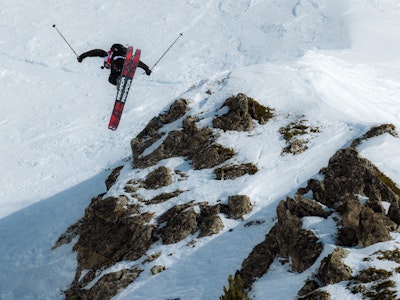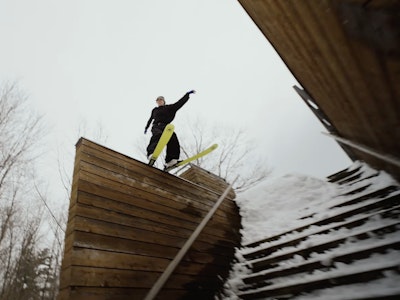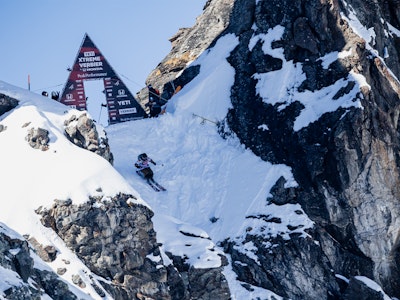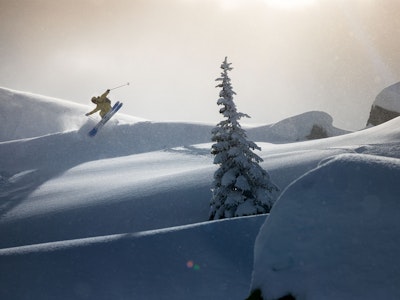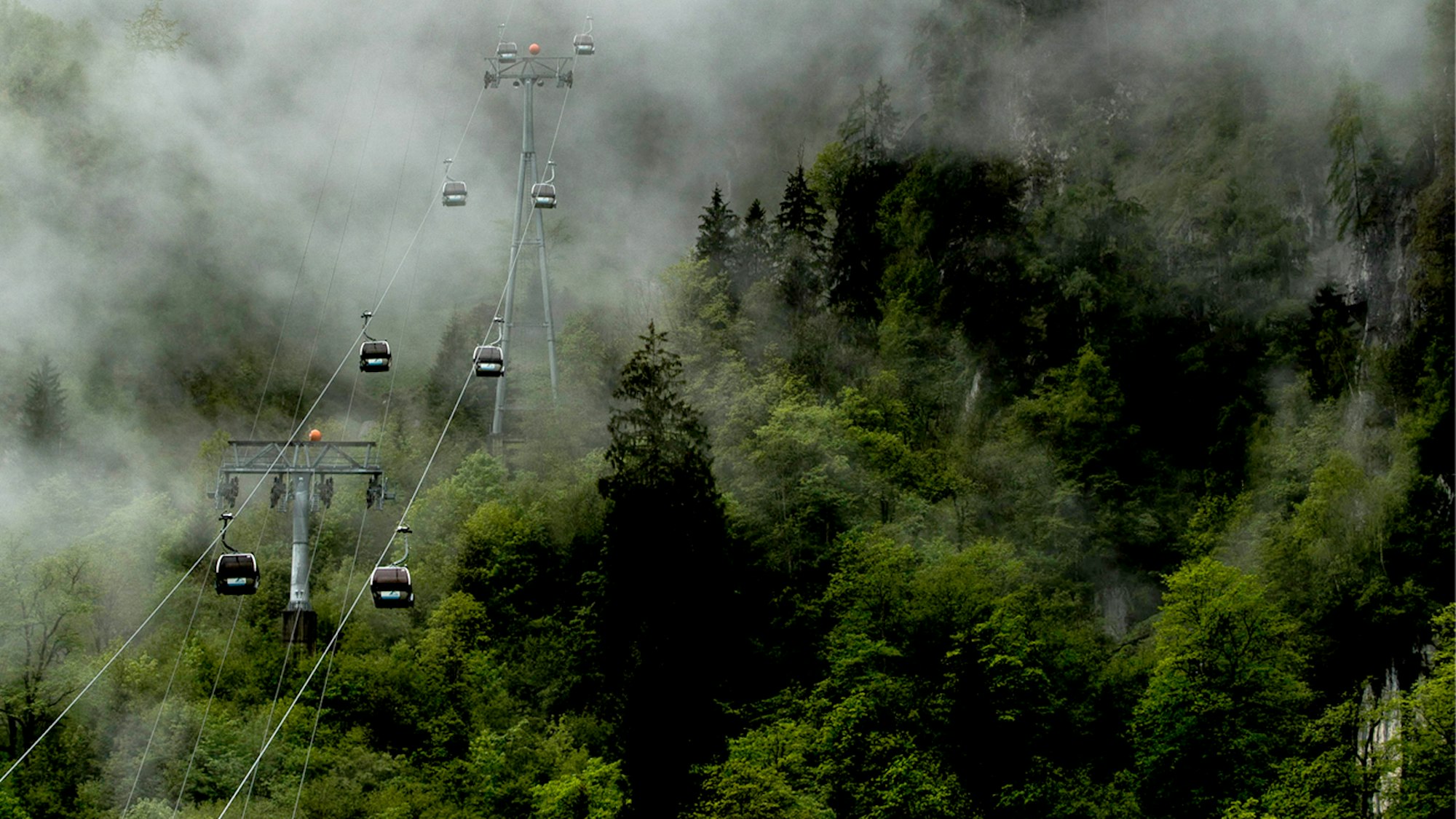In Altenmarkt, Austria, Atomic has situated itself in the center of one of skiing’s most passionate communities. This spring, FREESKIER gained exclusive access to its factory and headquarters. What we found is a brand with a generational commitment to the sport and a focus on the future that puts skiing above anything else, even beer—and that’s saying a lot.
WORDS & PHOTOS • SAM TAGGART
There’s a castle nestled in the mountains just an hour outside of Munich, Germany, on the road to Austria. It’s perched high above the valley floor, looming over pastures and the two-lane highway that aims southeast toward the Austrian Alps.
We’d taken the scenic route—the historic pitstop was just an hour out of the way and it was an easy decision to append some cultural flare to the drive. At the Neuschwanstein castle, paragliders took flight in droves, launching from the cliffs surrounding the royal fortress and dotting the sky like colorful balloons.
We zipped effortlessly through the Bavarian countryside in a black BMW M5—which we’d soon find would illicit snickers and sneers from our Austrian hosts who weren’t as impressed with the merit of German heritage. Driving the Beamer on its home turf was a thrill, a fitting precursor of the experience we’d get on Atomic skis in their hometown, a few days later. For now, however, we passed fields of white asparagus, cows nibbling on grass, small restaurants and cottages worthy of a summer holiday. Eventually, our winding detour converged with the Autobahn, just as the sun was setting.
Heading into Austria toward the small village of Altenmarkt, the landscape changed dramatically. Mountains—jagged and jutting straight up from the ground—surrounded the highway as it wove into Altenmarkt. The skies grew grayer as scattered clouds moved and melded overhead, and the disappearing sun gave a subdued, pink glow to the landscape.
The following morning, we met our “main man,” Dominic Tritscher, the sports marketing manager at Atomic. Born in a neighboring town of Altenmarkt, where Atomic houses its main factory and offices, Dom seemed a relatively reserved 30-something family man at first. Turns out, the guy is a firecracker with a story for every occasion and has a knack for pushing speed limits on his custom Harley Davidson motorcycle. Nothing short of obsessed with skiing, he also exhaled information about the sport and Atomic’s history like a chainsmoker, and proved a top-notch, multi-lingual guide as we toured the factory, met product designers and skied on the nearby Kitzsteinhorn glacier during our week-long stint in Austria.
In the Alps, anywhere is fair game for exploration. With the correct set of skills, high-consequence terrain morphs into a boundless, craggy playground—especially in the wintertime, when you can traverse from village to village by means of cable cars, ski touring and downhill skiing. On our first morning in Altenmarkt, Dom casually mentioned we were going to climb a moderately difficult via ferrata—translated “iron way”—a vertical rock climb assisted by a static cable and hand-placed metal rungs. In what I’d learn was typical Austrian behavior, we began the climb without much instruction; “Don’t fall and we’ll see you at the top,” were the guidelines. I took a screamer about halfway up, dropping ten feet into the abyss before my harness caught me. That shit was scary, but I felt alive. Dom, on the other hand, had climbed that same wall countless times since he was a child, and was notably comfortable getting off the ground into sheer, exposed terrain. Dom’s calm, cool and collected ascent reflects the character shared by all Altenmarkt locals, whose relationship with their vicinal mountains is as recreational as it is binding. And it’s a lifestyle that blends seamlessly into the design and construction of the top-tier skis, boots and protective gear at the Atomic factory.
On our second day, we got down to business and Dom led us on a tour of the ski manufacturing facility, where roughly 400,000 pairs of planks are pressed annually. The largest and most prolific ski production plant in the world, the factory is ground zero for all of Atomic’s operations. Accompanied by a state-of-the-art, automated shipping center that seamlessly processes hundreds of thousands of products and a heating system that recycles warmth from the ski presses in the building and redistributes it across the campus, the factory is simultaneously efficient and eco-conscious. Located on the eponymous “Atomic Straße,” or “Atomic Street,” the workers on-site are responsible for building Atomic’s entire lineup of skis, from rental fleets and the freeride-focused Bent Chetler, Vantage and Backland series, to the top secret World Cup skis that Atomic’s downhillers use on the global race circuit. Beyond skis, the campus serves as the nerve center for all of the brand’s boot division research and development, affording designers the opportunity to build, test and tweak a pair of boots all in a day’s work.
Once in the factory, we walked along a designated path through its expansive rooms. We saw stacks upon stacks of raw materials—bases, steel edges and a variety of wood types for the ski cores. Then came robotic arms swinging milled maple and poplar from one point to the next, edge-grinding machines that made sparks fly and band saws that workers use to separate and hand-trim the excess material from a freshly pressed set of skis. The “paint department” applied the correct mixture of colors and graphics to each ski’s respective topsheet. Finally, at the “pairing station,” some of Atomic’s veteran workers checked and double-checked—by hand—each ski’s flex and feel before pairing it with another that matched identically.
Of all the workstations in the factory, we spent the most time at the ski-assembly station and press, watching a long-tenured employee clamp together each layer of a Bent Chetler 100 with practiced precision. This was certainly the most important stop, the spot where raw materials, which have been forged in bulk across the factory’s various departments, are sandwiched to form the multi-layered foundation of a ski. Juxtaposed to the precise movements of the robots at the milling stations and elsewhere, the hand-built aspect of each pair of skis emerged as a defining moment on our tour through the facility. The co-habitation of robots and humans isn’t unique to Atomic’s factory, but in this special place, the robots play an auxiliary role to the care and dedication with which these skis are being constructed, and it showed in the faces of the staff, who flocked to our cameras with beaming, prideful smiles that said: “Look at these skis I just built!”
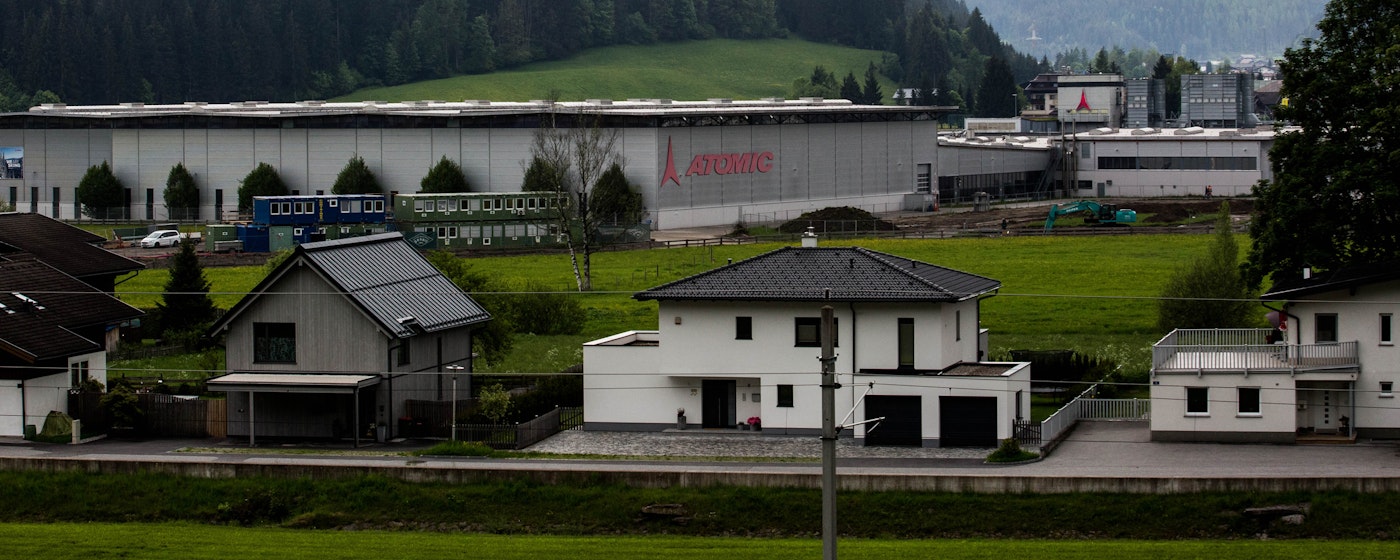
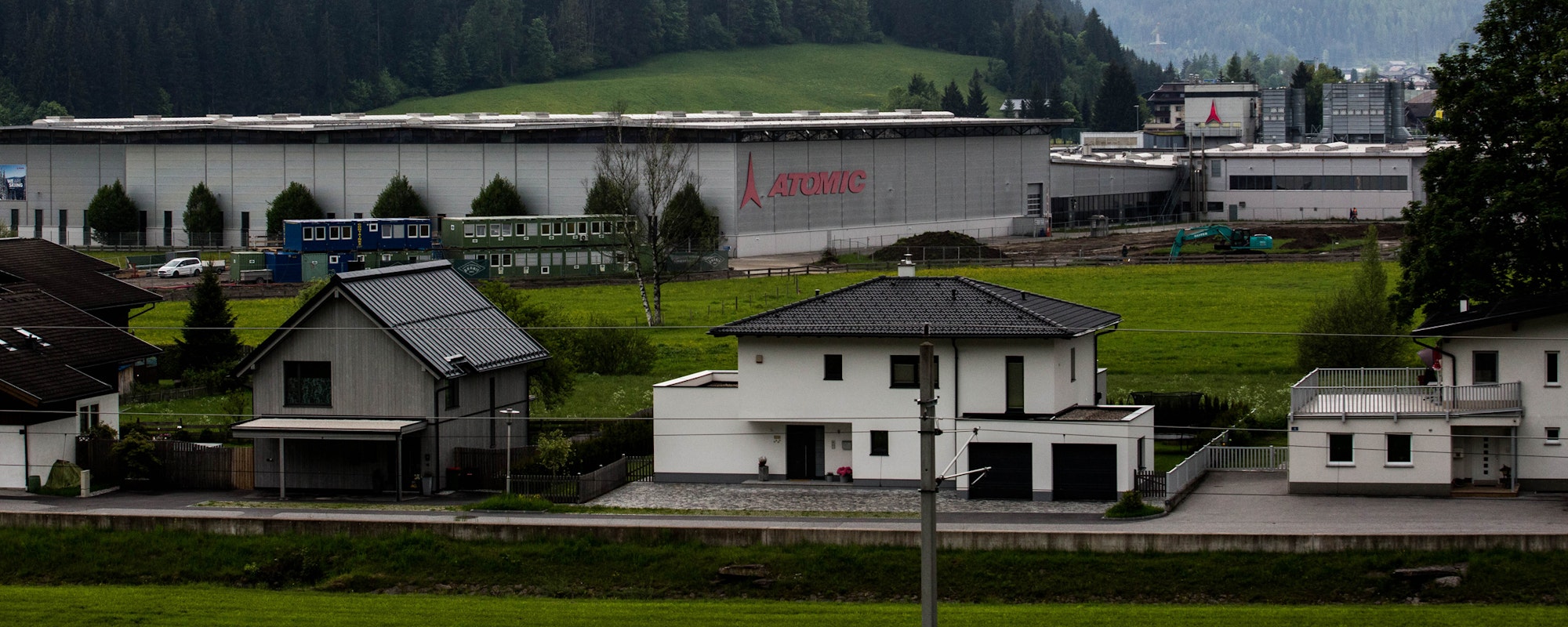
It may look quiet from the outside, but Atomic’s factory in Altenmarkt manufactures the most skis of any facility in the world—nearly 400,000 pairs annually.
After a full day walking the factory floor, it was clear that the people involved in the ski-building process at Atomic—from the ground level to the brand’s highest-level designers—were all invested in the same idea: Make the skiing experience better.
“Lots of people have been a part of this story,” Herbert Buchsteiner, the product manager of Atomic’s ski division, explained to me. “Parents, grandparents, they’ve all worked in the factory or in different positions at Atomic. If you were here in winter, you’d see a big share of Atomic skis on snow [around Altenmarkt]. There’s a lot of pride, not just from the people working at Atomic, but also people living in the area.”
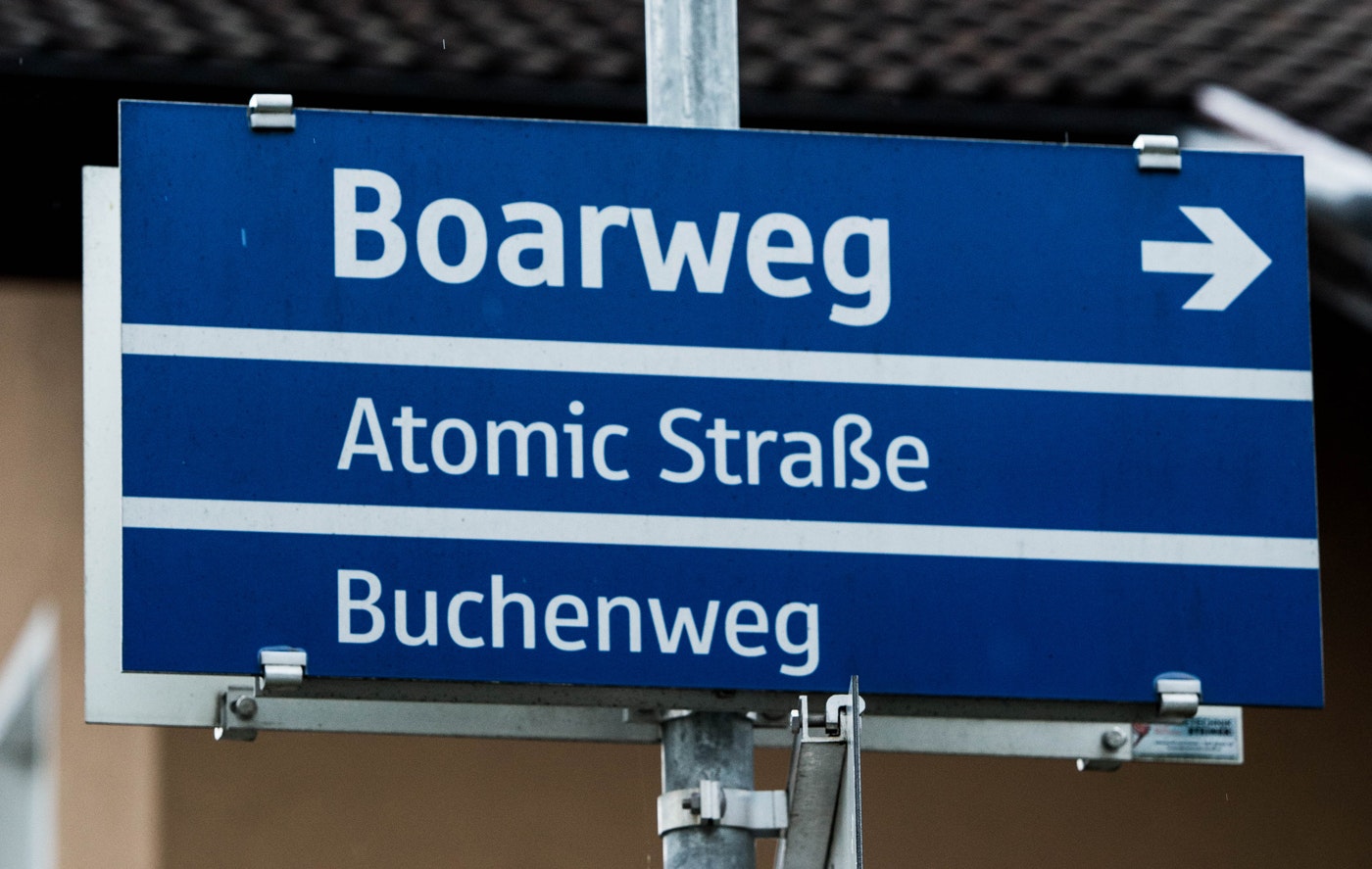
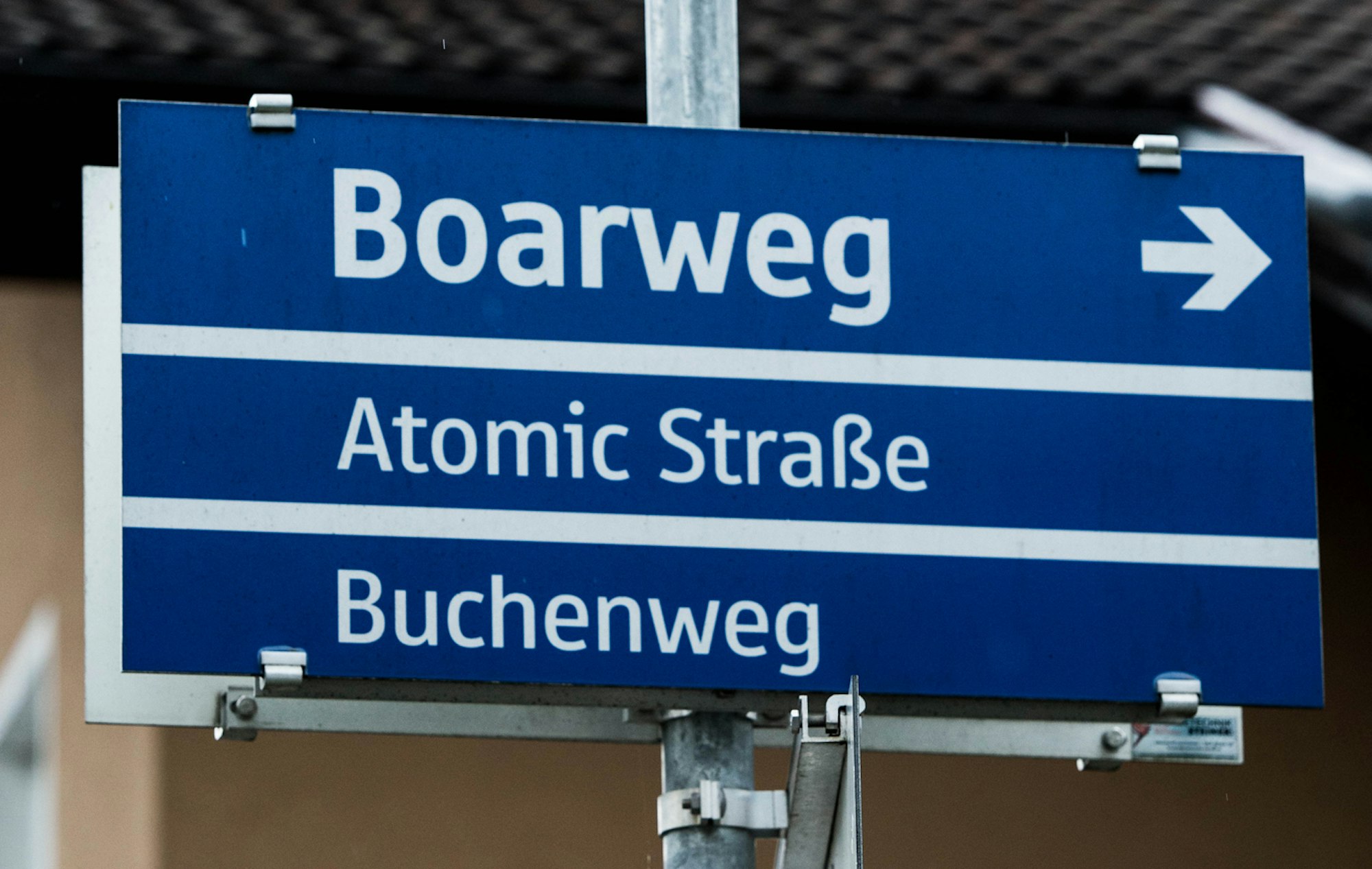
The sign in Altenmarkt for “Atomic Straße,” or “Atomic Street.”
Apart from the community Atomic fosters, the innovative gear it produces plays a leading role in the industry, and the company’s long heritage and knack for developing and manufacturing state-of-the-art ski equipment shows tangibly at its headquarters. The moment you step into Atomic’s offices, a trophy case chock-full of Crystal Globes and four stunning product displays greet you at the entranceway, showcasing the brand’s longstanding tenure at the top of the sport and the latest-and-greatest “visible technology” on its various hardgoods.
“We always try to find technology which you can see, which you can touch,” noted Buchsteiner on Atomic’s inventive designs. “There is a strong winning spirit within the brand—and not just winning a race—but always being a step ahead, trying out new things, being innovative.”
Instead of hiding its performance-enhancing features “under the hood,” somewhere beneath the topsheet or out of sight in the ski’s core, Atomic wants you to notice the unique shape of the HRZN Tech tips and tails on the Bent Chetler series skis at first glance; they want you to see the waffle-pattern of the Prolite construction process—a design tactic that reinforces lightweight materials in key locations for boosted performance—on its Vantage skis and Hawx boots. In essence, the company is making an outright statement: We’re at the top of our game and here’s the visual evidence.
The brand’s other lead designers put it more modestly when we spoke to them. Matt Manser, an ex-pat Vermonter who is the global product manager of alpine and touring boots at Atomic, noted, “The core of every boot starts with fit, comfort and performance and what makes us unique are the solutions that we come up [with] for each of those things; currently, that’s Prolite. For thirty years, ski boots have been pretty heavy and made of thick plastic, but we’re… really challenging that construction and bringing a boot to market that is lighter but still has all the skiing performance an all-mountain consumer comes to expect.”
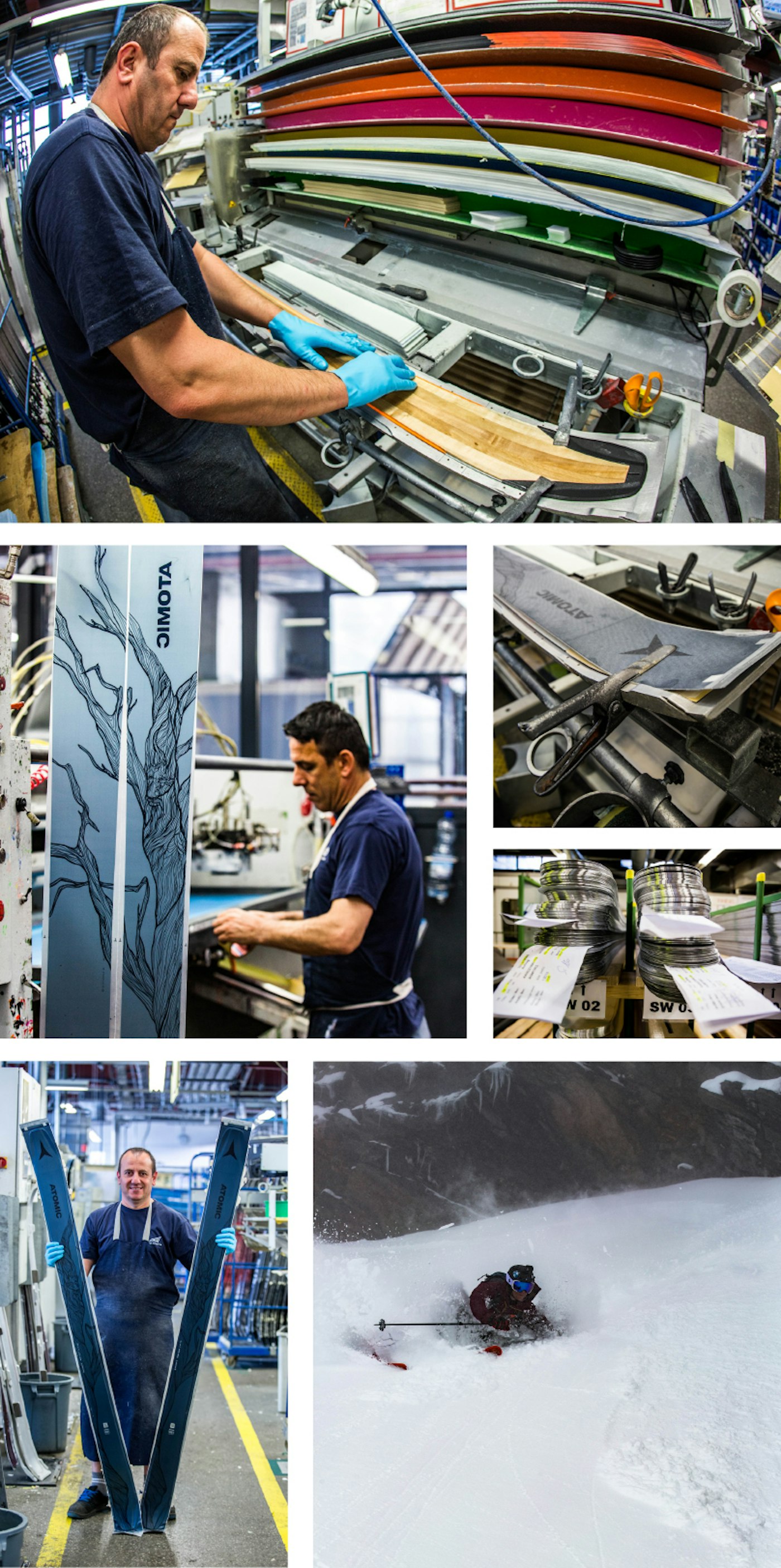
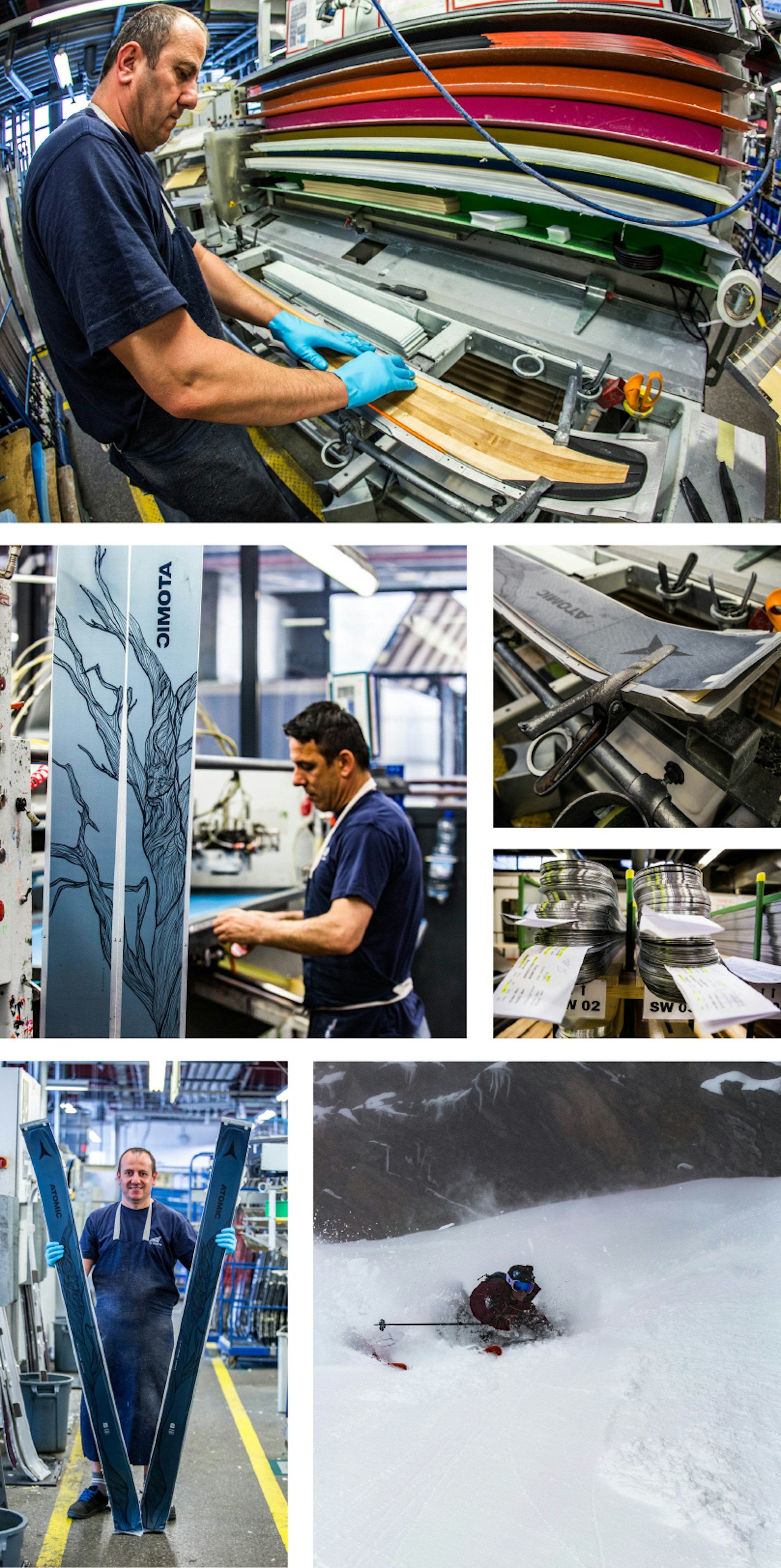
Peter Wirthenstätter, business unit manager of Atomic’s protective gear, echoed the same idea in our conversation: Atomic is calling attention to its helmets and goggles by designing them so stylishly and packed with protective features that top athletes actually want to wear them on a day-to-day basis. “The safest helmet, if it doesn’t look good, it won’t be worn, especially with [pro] athletes,” said Wirthenstätter. “No matter if it’s freeskiing or alpine athletes; they have to look good… Ideally, in the end, we get to a point where everyone is happy. That means compromise, but sometimes compromise creates something even better than you initially had in mind.”
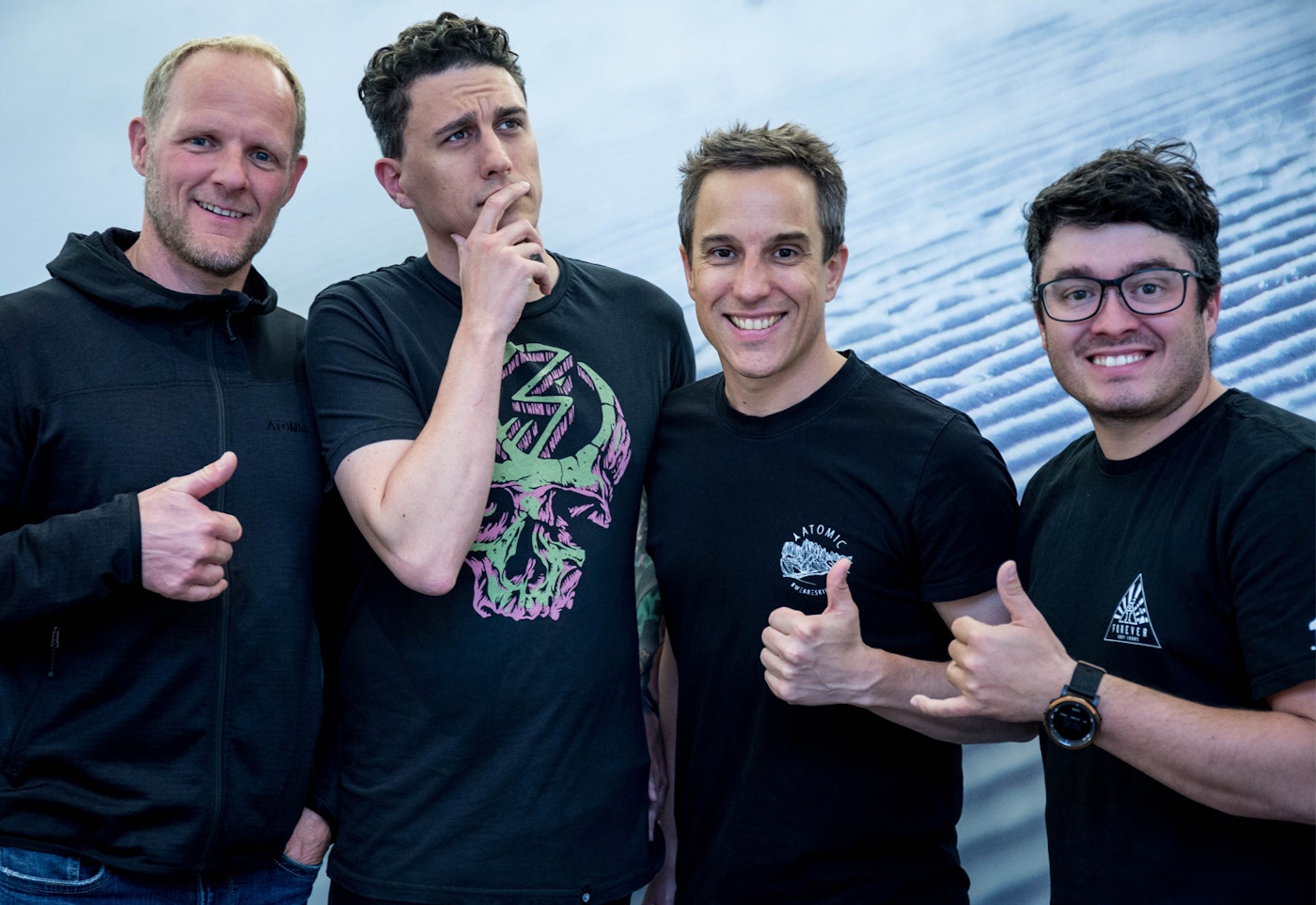
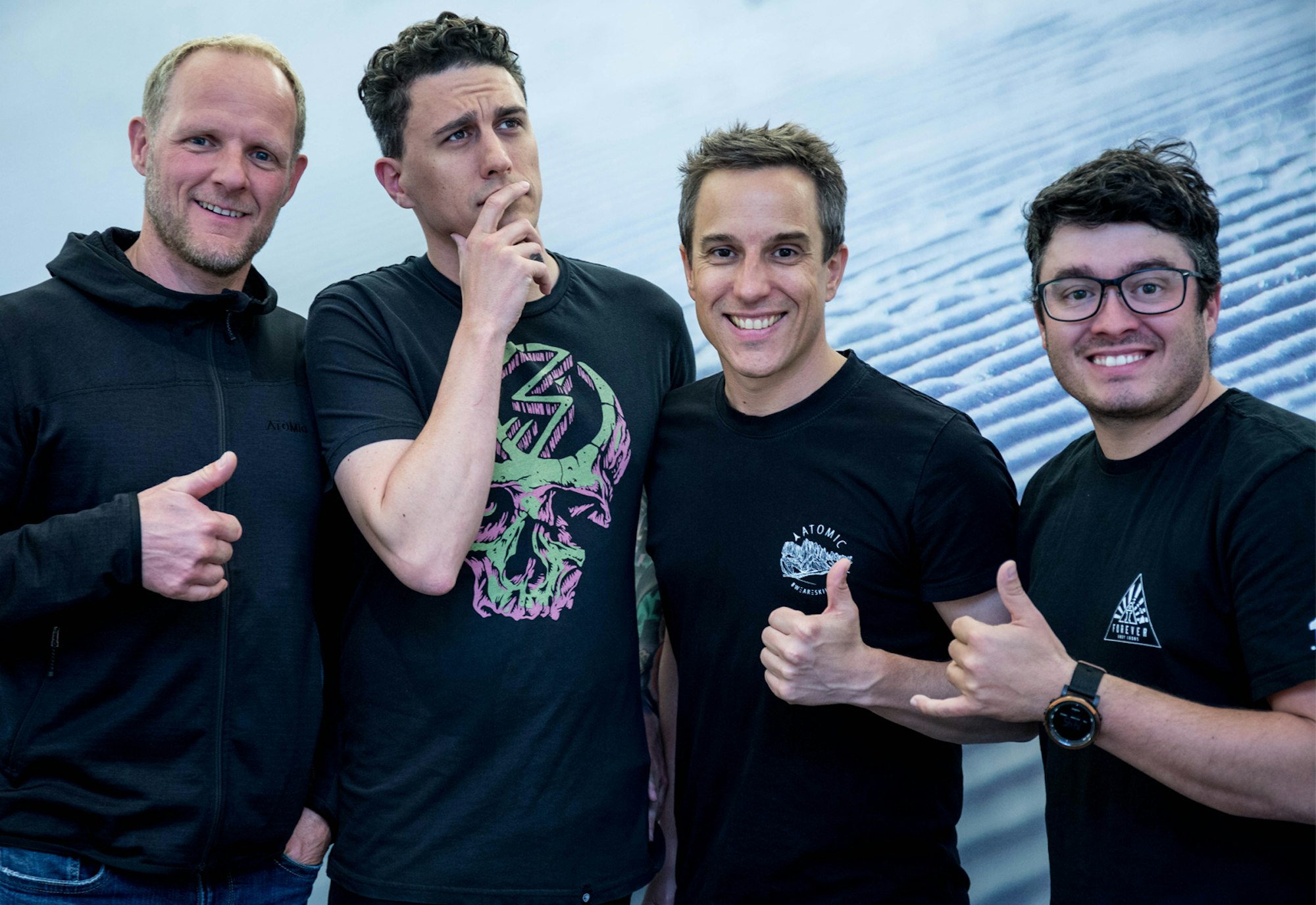
These smiling fellas lead Atomic’s hardgoods design and development programs. Pictured from left to right: Herbert Buchsteiner, Matt Manser, Peter Wirthenstätter and our “main man,” Dominic Tritscher.
With household names like Sage Cattabriga-Alosa, Jossi Wells, Tess Ledeux, Chris Benchetler, Tim Durtschi, Nick McNutt, Aymar Navarro, Arianna Tricomi and others on the Atomic freeski roster, it’s easy to get excited about the gear; you see it in movies and advertisements, at freeride competitions and park and pipe contests and it undoubtedly pops up on your Instagram feed, too. But beyond talking about all of this amazing equipment, watching it manifest in front of our eyes made us yearn to actually use it. Naturally, our last day of the trip was reserved for skiing…
That final morning, we packed up everything in our small chalet, including postcards, small bottles of schnapps and some Austrian candy for our friends back home—we’d also kicked the in-house kegerator, so it was a fitting time to leave. It had rained for five days straight, which is nothing unusual for springtime in this part of the world, and the closest ski area wasn’t fit for skiing anymore; however, within an hour from Altenmarkt, there were more than 50 different ski areas and 300 individual chairlifts, trams and gondolas, so finding a place to relocate was as easy as ordering schnitzel.
We loaded the M5 with hot-off-the-press Bent Chetlers, brand new Hawx Ultra XTD 130 boots and seven days’ worth of luggage. The car looked like it was about to burst at the seams. Dom, our guide-turned-weather shaman, mentioned that the rain in Altenmarkt had turned to late-May snow up high on the Kitzsteinhorn glacier, just forty minutes down the road, igniting optimism about the snow conditions and our decision to ride the fattest Bent Chetlers available.
In the ski area parking lot, springtime temperatures hovered in the low-50s (Fahrenheit) and the valley sported a lush, vivid green color from an entire week of precipitation. Looking up, the gondola cars disappeared in a thick cloud just a few moments after leaving the docking station—it was a quintessential and beautiful “into the clouds” moment, but it marred any chance of us experiencing breathtaking views from “the top of Salzburg.”
Gear Spotlight


Atomic Backland 107 – Buy Now
The Backland 107 is Atomic’s lightweight, freeride touring ski, that impeccably balances weight savings with downhill power. Its HRZN Tech tip—a horizontal convexity that adds 10 percent more surface area—ensures it floats the deep and remains maneuverable, while a combination of beech and poplar wood with a carbon fiber backbone guarantees it’s stiff, responsive and efficient.
Luckily, we had two local Atomic pros with us who’d help our crew navigate through the poor visibility: longtime guides and big-mountain skiers Mattias “Hauni” Haunholder and Heli Putz.
Of late, Hauni, as he’s known around town, has traded the Freeride World Tour competition circuit for a combination of fatherhood and increasingly far-off ski expeditions. When we met up, he had just returned from the northern reaches of Greenland chasing first descents. To put things in perspective, he borrowed a pack of huskies from a local Inuit man to help keep him and his team safe from polar bear attacks during the month-long adventure.
Heli, pronounced “hee-lee,” on the other hand, has been an Atomic ambassador since 1987. Leading ski mountaineering and high-alpine excursions for over 20 years, the kind-eyed Austrian could asses snowpack and weather conditions with just a glance and he skied with a simple, impenetrable confidence, as if he’d never fallen in his life. A state-certified mountain guide who had traversed the globe to ski places like Africa, Patagonia, Pakistan and Alaska, Heli was certainly a welcome companion for our day on the glacier.
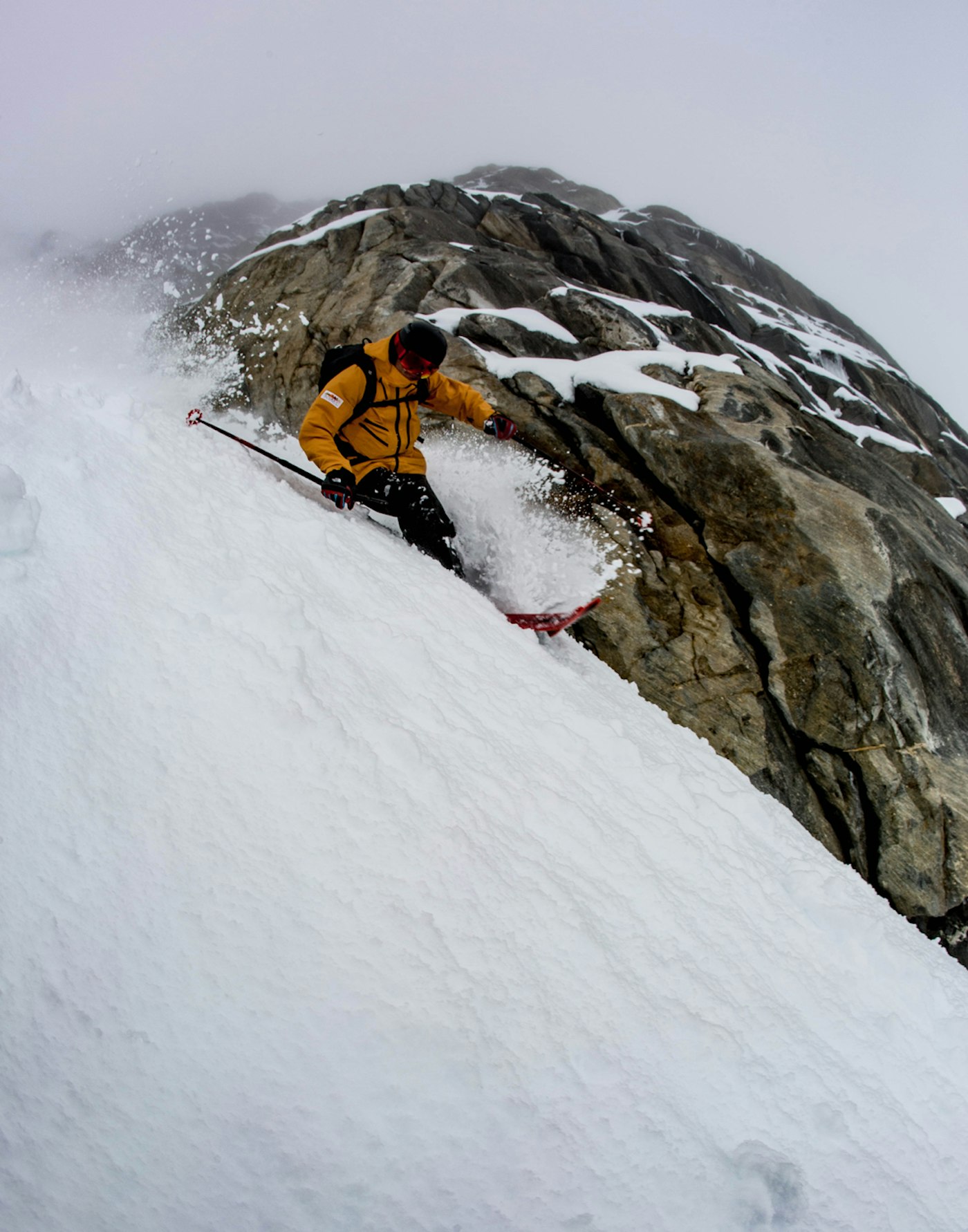
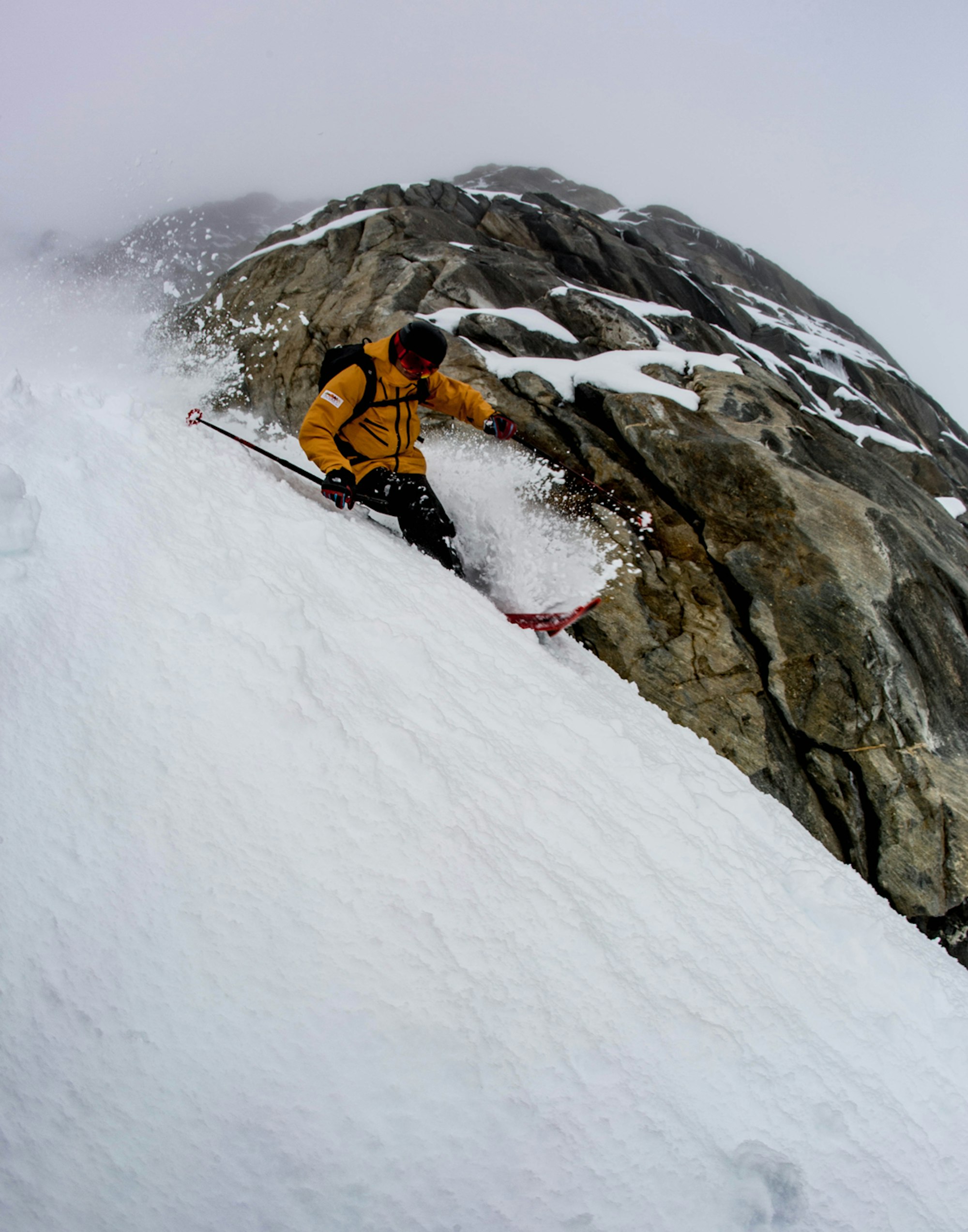
Longtime Atomic ambassador and mountain guide, Heli Putz, finds a stash on the Kitzsteinhorn glacier.
In contrast to our guides’ awe-worthy resumes, our objective on this ordinary Thursday was a bit more tame than their usual exploits: milk some pow turns, snap some photos, and, most importantly, have a great time skiing. After riding a gondola, chairlift and tram all before clicking into our skis, we arrived at the top of the mountain—10,509 feet above sea level—totally locked in a fog. We were the only ones in ski gear at the summit station; the few others on the tram with us were dressed in street clothes and just wanted to sightsee. Poor luck.
As one does in the Alps, our hulking guides set a boot pack just off the side of the gondola platform and off we went into the clouds. We made our way through terrible visibility along the glacier—where there’s snow year-round—and found a few nice pockets of fresh just below an outcropping of hefty rocks that shot up another 30 feet from the ground. At this elevation, shifting winds had piled up the gloppy snow so that it was thigh-high in places. Thankfully, our guides knew exactly where to look.
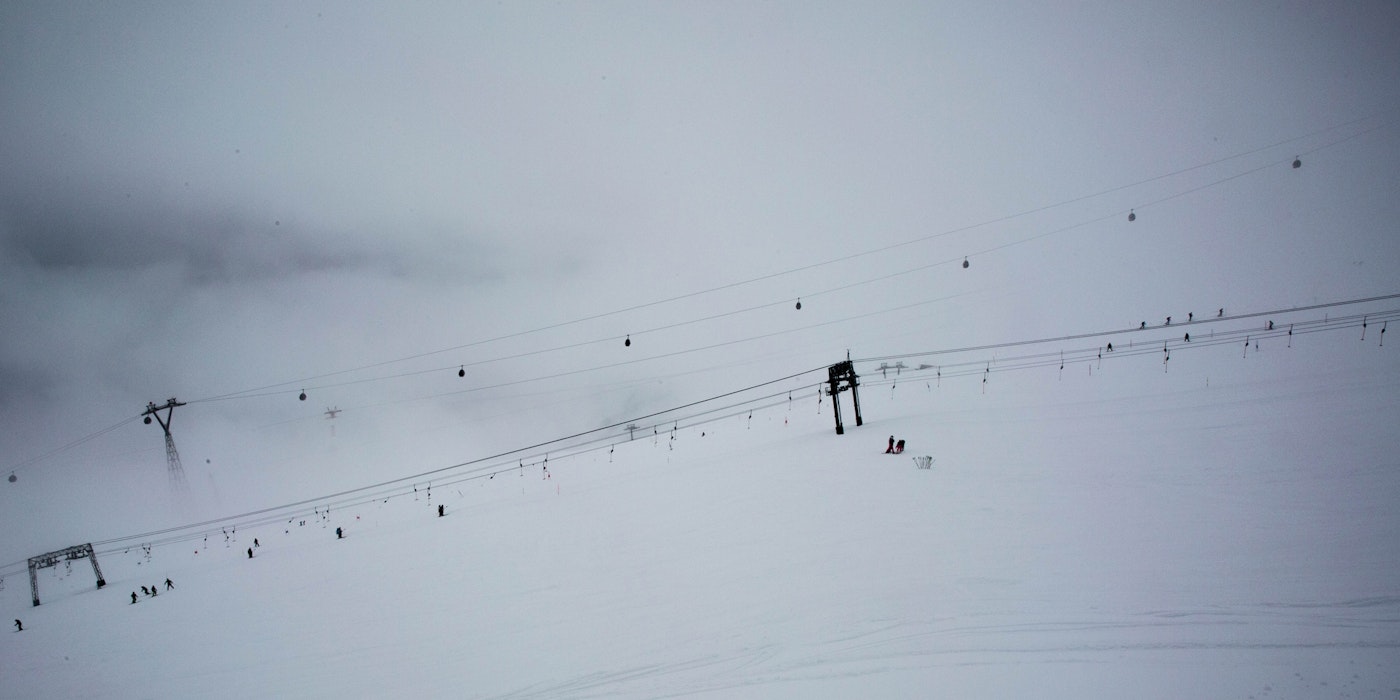
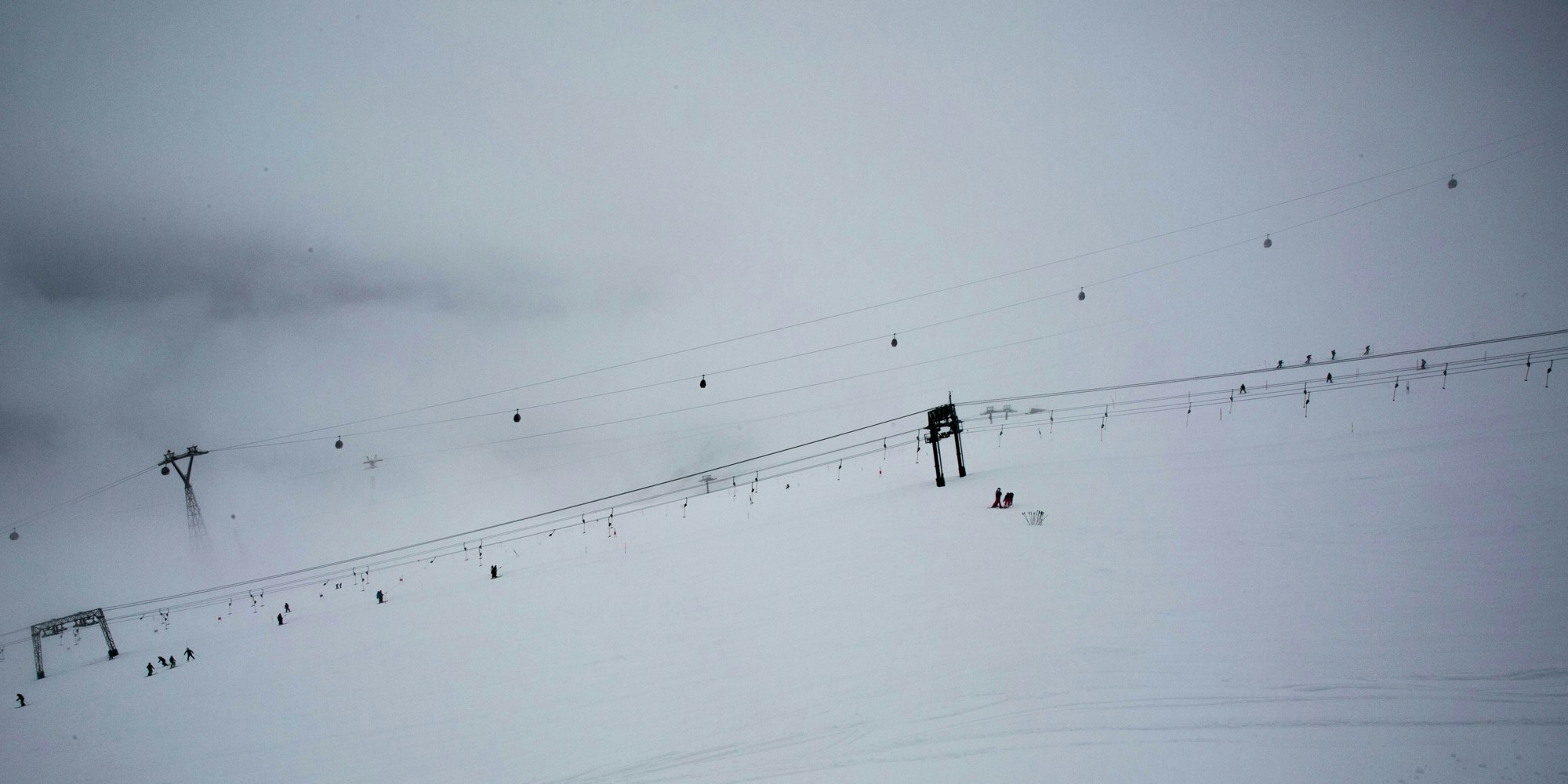
Waiting for the light to break, I watched the T-bar fade in and out of sight across the glacier—there and gone again in a matter of moments. One-by-one, our crew descended during fleeting patches of good light, making the most of each turn through the knee-jerking snow. Hot pow on the penultimate day of May was a welcome treat and the Bent Chetlers we had underfoot afforded us some extra style as we descended through the unyielding murk.
Although a tad wider than my typical daily driver and optimally designed for conditions deeper than what we’d experienced, the “Chets” surfed the mountain with a balanced and playful feel; the wide platform had me floating over the mushy crud with reckless abandon and slashing through the leaden snow down low with wide, arcing turns. Turns out, the eleventh-generation of the Bent Chets—originally conceived and still constructed just down the road in Altenmarkt—are a powder-hounding set of skis versatile enough to plow through mid-winter stashes and late-spring slop without missing a beat.
When it all shakes out, after skiing (or, in fact, after anything), all the Austrians want to do is enjoy a cold lager with close friends. For the ski-makers and hardgoods designers in Altenmarkt, and for us skiers who’d just wrapped up a day on the Kitzsteinhorn glacier, the tradition held true. We clinked our steins together, ate hearty portions of kasnocken—Austrian gnocchi and cheese—and laughed about having a “good day in the office.” Although we’d traveled thousands of miles to be there, for Hauni, Heli and Dom it was just another weekday at home.
In this part of the world, ski-crafting will never be perfected. There will always be a way to enhance the skiing experience, and the people of this region are devoted to that idea. By no coincidence, Atomic has placed itself in this nucleus of the sport and continues to affect its core with viral sensation.

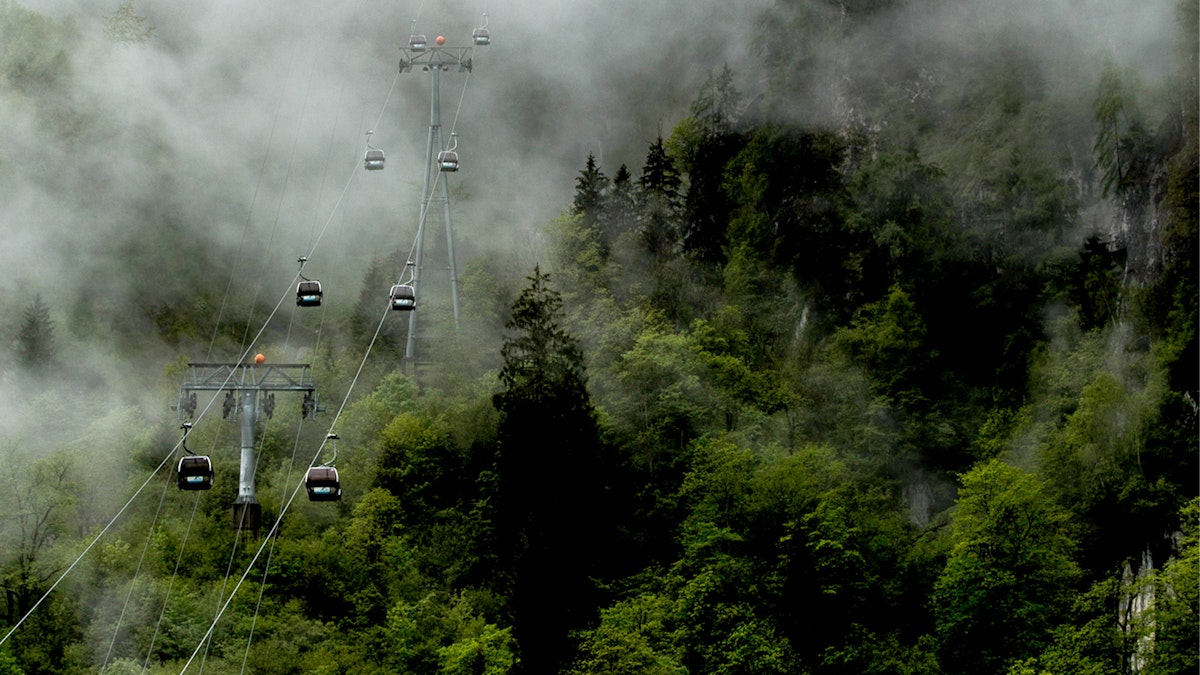
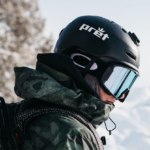

![[GIVEAWAY] Win a 4-Night Karma Campervan Rental and go Ski the Powder Highway](https://www.datocms-assets.com/163516/1767816935-copy-of-dji_0608-1.jpg?w=200&h=200&fit=crop)
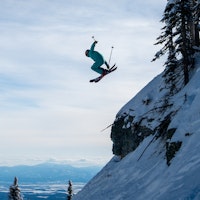
![[GIVEAWAY] Win a Legendary Ski Trip with Icelantic's Road to the Rocks](https://www.datocms-assets.com/163516/1765233064-r2r26_freeskier_leaderboard1.jpg?w=200&h=200&fit=crop)
![[GIVEAWAY] Win a Legendary Ski Trip with Icelantic's Road to the Rocks](https://www.datocms-assets.com/163516/1765233064-r2r26_freeskier_leaderboard1.jpg?auto=format&w=400&h=300&fit=crop&crop=faces,entropy)
